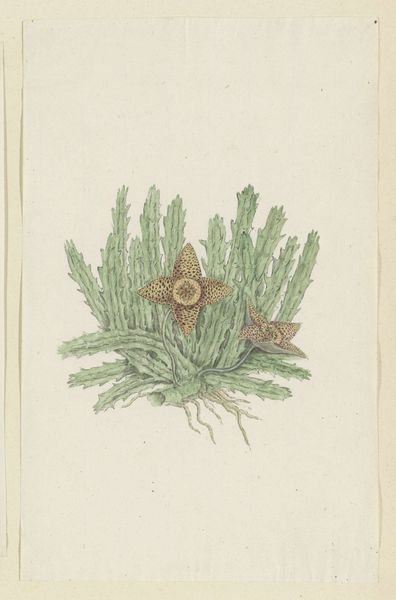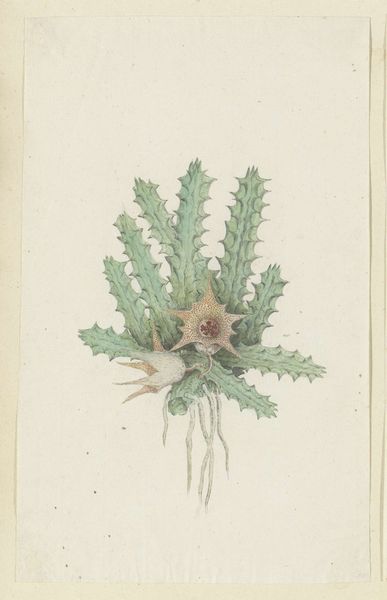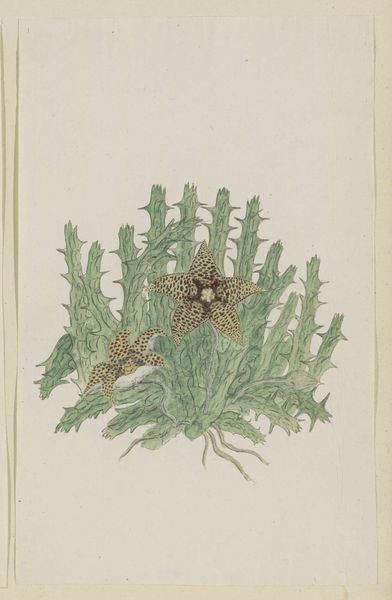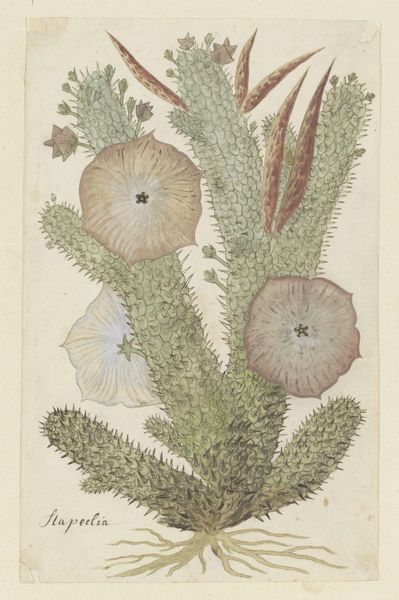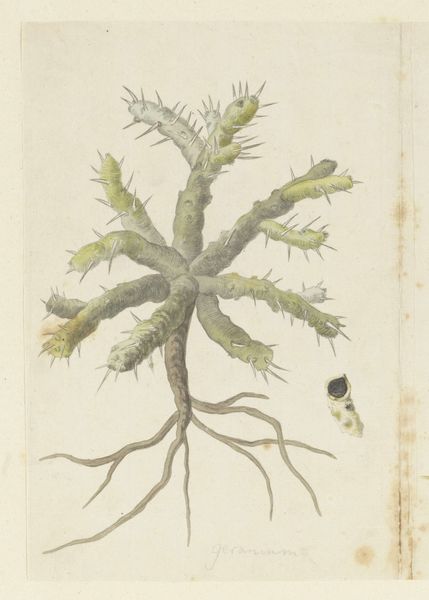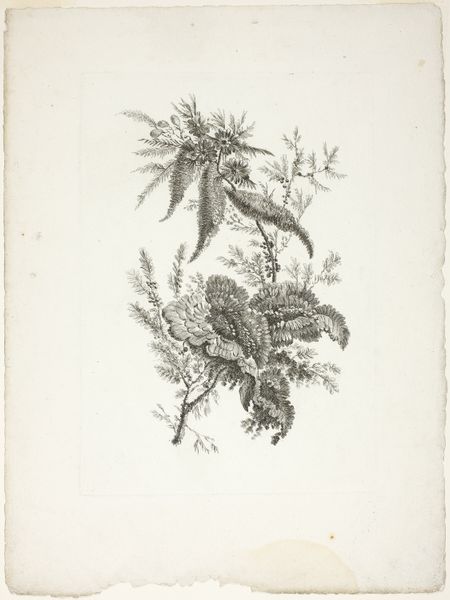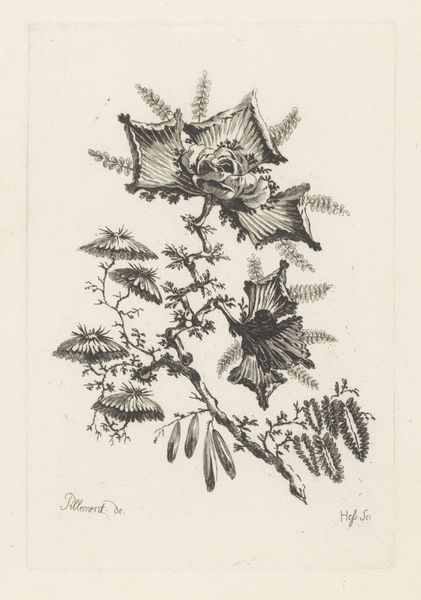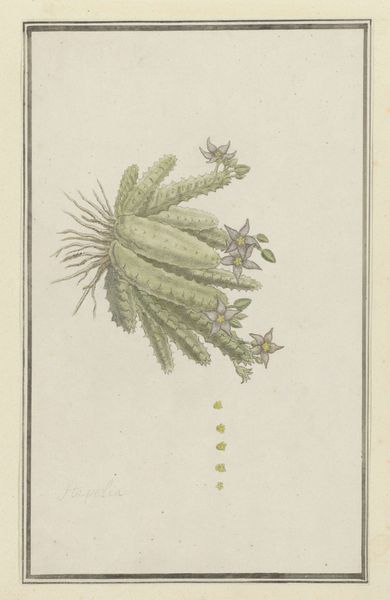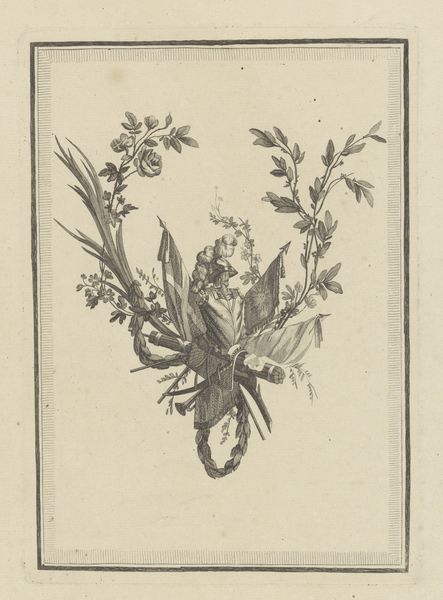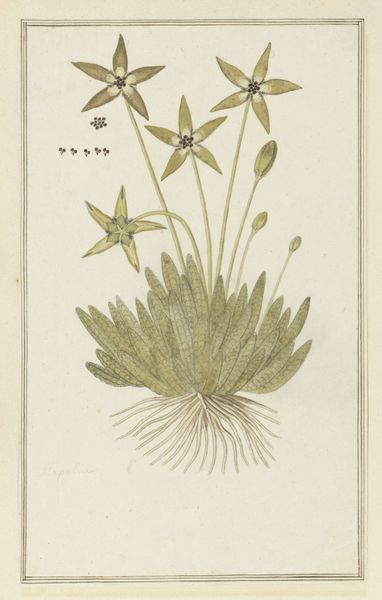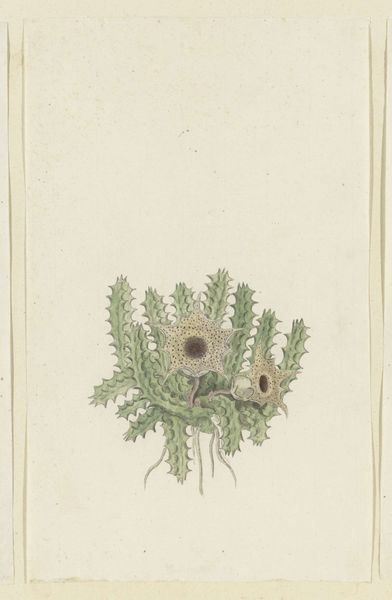
drawing, watercolor, ink
#
drawing
#
blue ink drawing
#
etching
#
watercolor
#
ink
#
watercolour illustration
#
naturalism
Dimensions: height 660 mm, width 480 mm, height 326 mm, width 205 mm, height mm, width mm
Copyright: Rijks Museum: Open Domain
Robert Jacob Gordon created this watercolor drawing of the Orbea verrucosa, or Hirsute Stapelia, a succulent plant, most likely in South Africa during the late 18th century. Gordon was a Dutch explorer, soldier, and naturalist, and his drawings are a visual record of his expeditions. The image, with its scientific precision, reflects the growth of European colonial expansion and the Enlightenment’s desire to classify and understand the natural world. The botanical drawing served a specific cultural purpose, as these images were instrumental in the communication of scientific knowledge back to Europe. Note that the clean, almost clinical rendering of the plant emphasizes the scientific gaze, reducing the plant to an object of study. To fully understand this image, one might look into the history of scientific exploration during this period, the colonial context in which it was made, and the development of botanical illustration as a means of scientific documentation. The meaning of this work lies not only in its aesthetic qualities but also in its historical and institutional context.
Comments
No comments
Be the first to comment and join the conversation on the ultimate creative platform.
